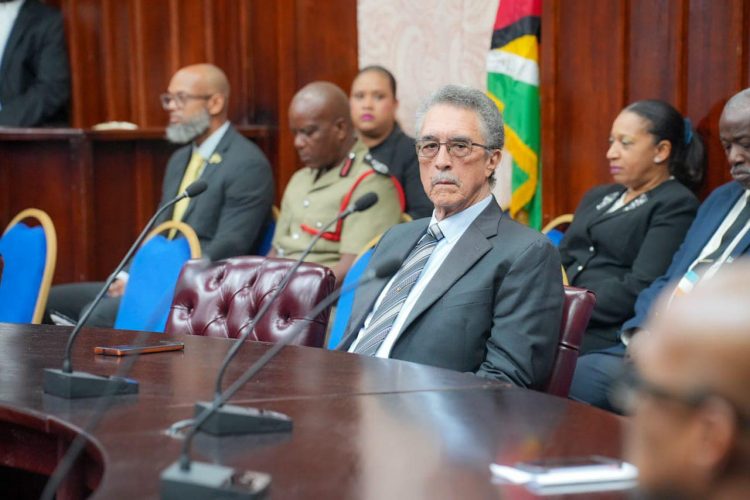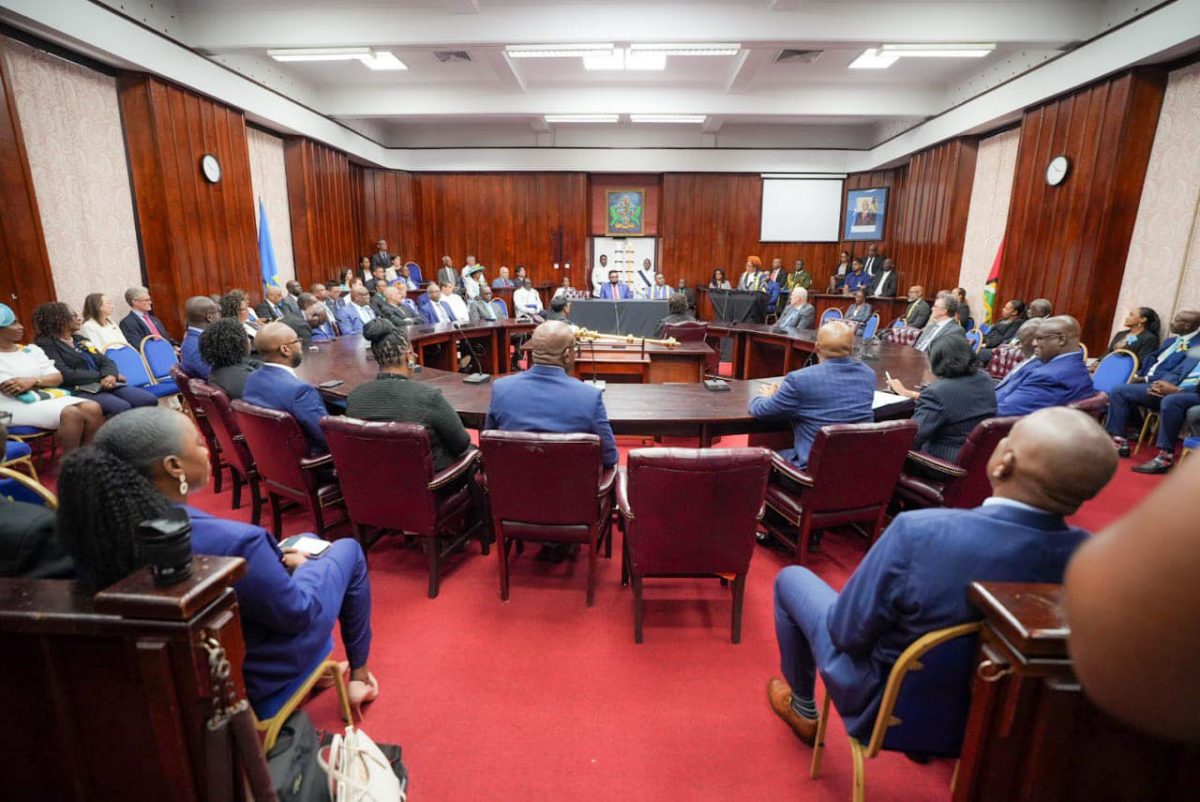Pushing for closer integration with Castries, President Irfaan Ali said yesterday that during the last 10 years, Guyana exported US$71 million in commodities to St Lucia, while the Caribbean island exported US$79 million in supplies to the “Land of Many Waters”.
The President made this disclosure while addressing St Lucia’s parliament in commemoration of the country’s 45th Independence Anniversary.
While calling for “systemic integration”, between the two countries to advance healthcare, education, technology and housing development, Ali is adamant that Guyana can assist the “Helen of the West Indies”, to advance in its housing sector.

He remarked “Systemic integration requires our education and healthcare systems and technological platform to be integrated”.
“Connectivity is not just the movement of people, goods, and services. Connectivity is about the movement of ideas, policies, and the integration of systems. Connectivity must be able to address all of this if we are to build a seamless system,”
President Ali said that his government has made major strides in improving the housing sector for the three years it has been in office.
“If you look at your existing housing market and let us say, conservatively you have a deficit in the housing market of 2,500 homes in the next three to five years, that is the immediate term, the medium-term need and you use the conservative figure of US$30,000 for a low-income home; that is why we are building prefabricated homes in Guyana.
“You’re looking at an export potential of US$75 million in the immediate and medium term from Guyana to St. Lucia”, he said.
“That export potential in this one area alone is more than the combined export in the last 10 years, and these are the opportunities, the real opportunities that exist in expanding the relationship and expanding the trade between Guyana and St. Lucia”, he added.
The Head of State proposed that adapting these mechanisms will undoubtedly generate wealth and aid in the integration of the manufacturing industries both in Guyana and St Lucia.
“These are things that I think offer immediate opportunity for the private sector and for us, as policymakers, to create the enabling environment that would allow this opportunity to become a reality”, he put forward to the St. Lucia Parliament.
The President said that the two countries can work together in the area of regional security as it relates to the development of its physical and human resource capacity in the armed forces.
President Ali also alluded to the trend of a “systemic disparity” in the region which he said also can be tackled by regional integration.
Because St Lucia’s food import bill is approximately 2,345 metric tonnes per annum, the head of state said that the local production systems could be created to eliminate those imports in the Caribbean Community (CARICOM) state.
The President also recommended that St. Lucia invest in shade houses and hydroponics as this would help the country in reducing its food import bill by almost 70 per cent.
He stated that Guyana has adopted a model by creating innovative agro-business opportunities using technology, research, and the involvement of women and young people.
“What this does is that it allows the rethinking of agriculture and the opportunities that exist in agriculture. And in allowing this rethinking, you have new capital and technology that come in and a renewed interest. Agriculture is part of the food production system which Guyana is pushing because we recognise that we cannot depend on an oil and gas economy, we have to be diverse and think long term”, he asserted.
Ali said that while Guyana and Barbados are currently at the helm of developing a regional food terminal, he will ensure that the said facility is built in a way which connects St Lucia so that the country can be a part of the regional distribution market.
The President pointed out that St Lucia imports close to US$12 million in fish and poultry on an annual basis, and suggested that a consortium be formed between the private sectors of both countries to keep the trade within the CARICOM region.
“This import can occur within the region. This business can be developed in the region. These opportunities can be catalyzed within the region, your work can be created within the region. Both St Lucia and Guyana will benefit, and the region will benefit as a whole”, he contended.





